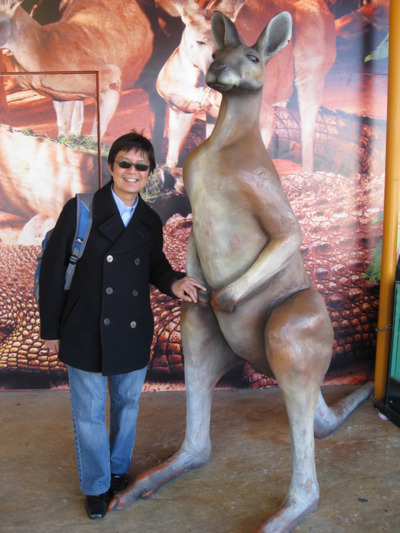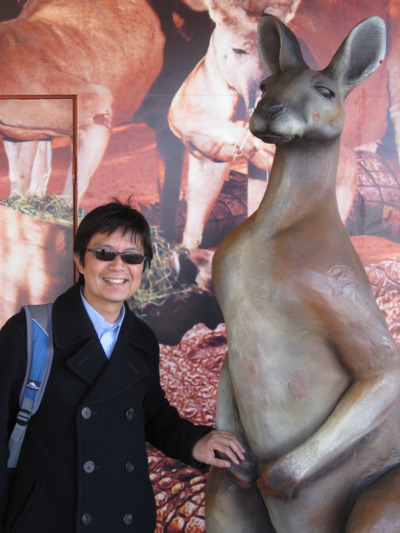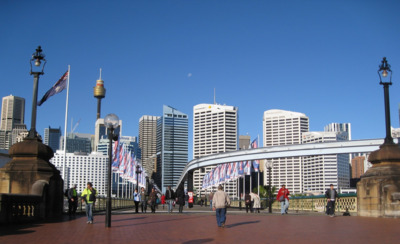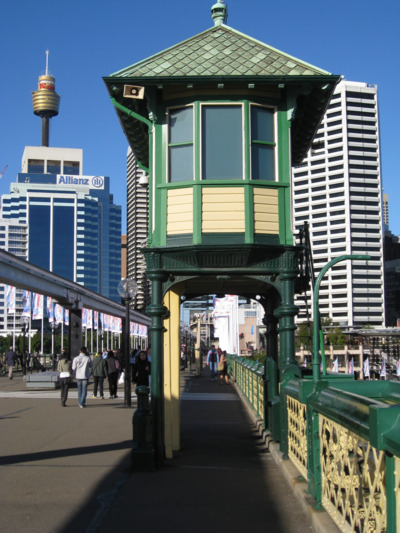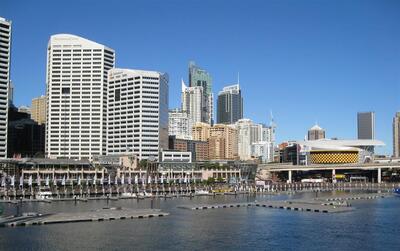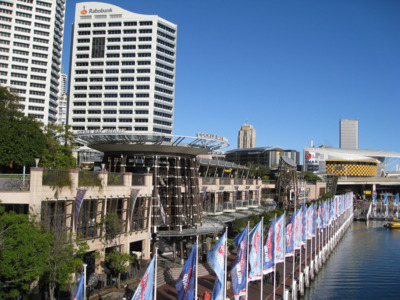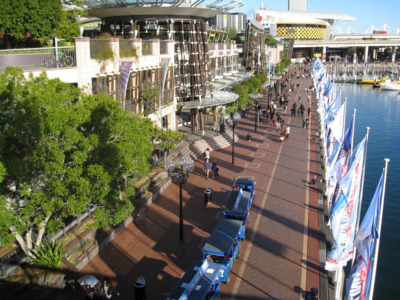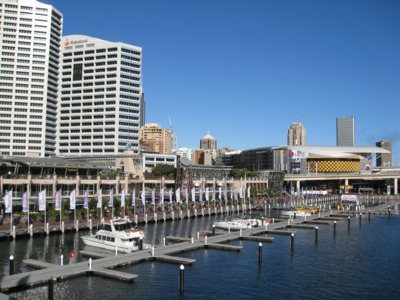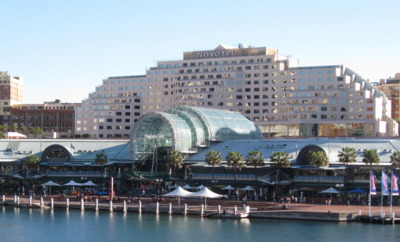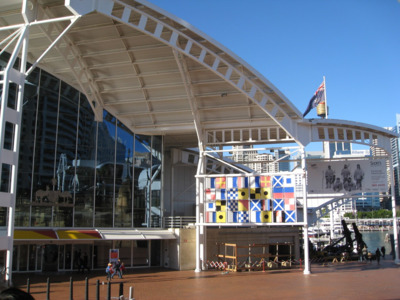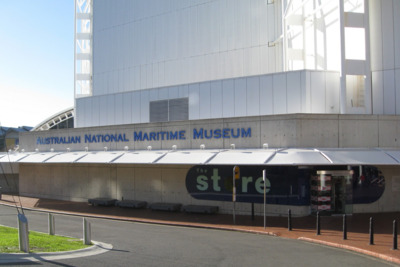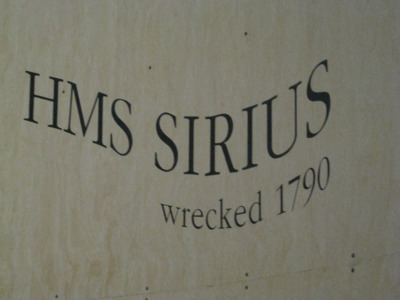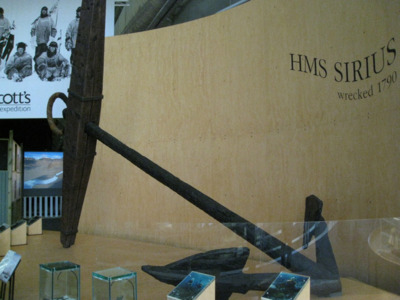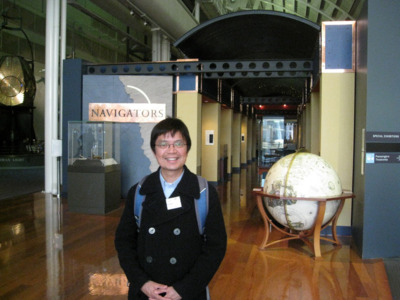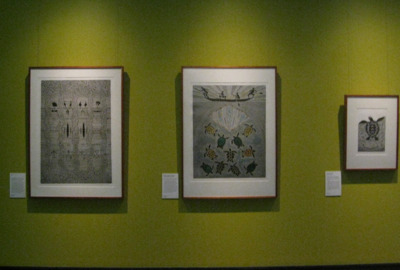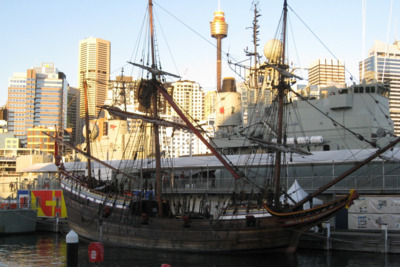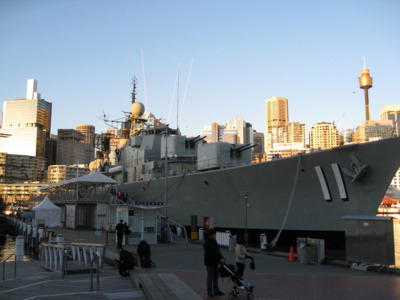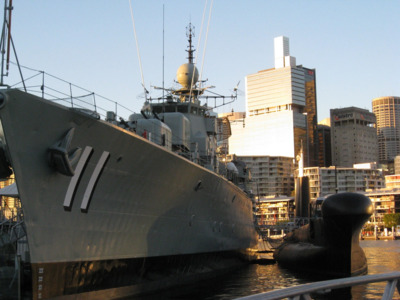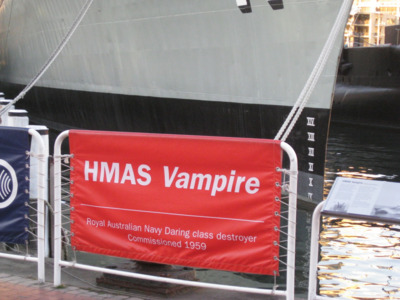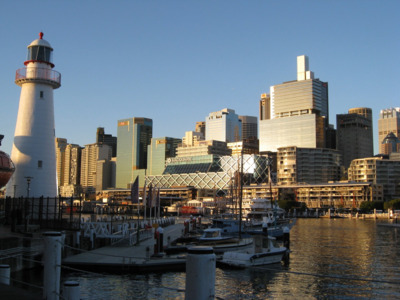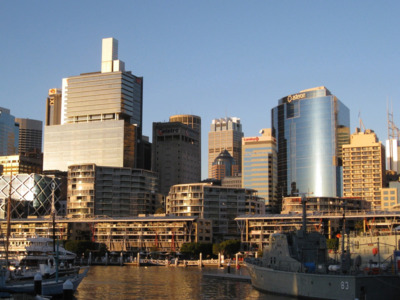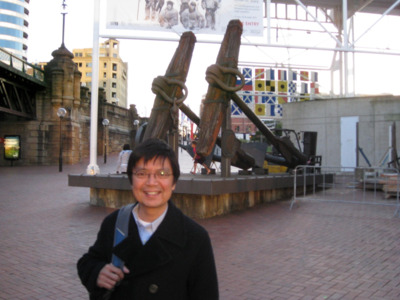Darling Harbour and the Australian National Maritime Museum
Darling Harbour was our next stop after Luna Park. we hadn't really planned on going there after the amusement park. It was all by chance. Right after leaving Luna Park, there was a ferry taking locals and tourists alike all over Circular Quay. We boarded one and when it reached Darling Harbour, we paid our tickets then we got off.
We didn't know what to expect. As per our guide book, we could visit the Australian National Maritime Museum, the Chinese Garden, the Powerhouse Museum, and the Sydney Aquarium. We decided that for this particular visit, our first to Sydney, we'd skip all the sites which we too have back home in San Francisco. Hence, we simply decided to spend the most time at the Maritime Museum which turned out to be a wonderful, wonderful place to explore.
Before heading to the museum, we ate some snacks in a Subway restaurant, then walked around the area. We wanted to go Australian all the way, even with food, but to be honest, Sydney felt and looked like an American City. It even had the same restaurant chains. McDonald's, KFC, you name it. Even the fastfood courts inside their malls had an American feel.
Anyway, we did find out where many of the attractions were located. They were all close to each other. Here I am standing next to a statue of a kangaroo at the Sydney Aquarium. I know you'd say, "What? A kangaroo exhibit in an aquarium? Could not have been! Right?" Well, it was at the Sydney Aquarium alright. It just so happened the statue served as an ad for a Sydney Zoo right at the lobby of the aquarium. Anyway, I had not seen a kangaroo yet and I was really excited to see one. But for that particular time, a kangaroo statue made of plaster was going to suffice.
I liked the Cockle Bay Wharf a lot. It looked new and clean. Yes, it was quite touristy with all its restaurants, bars and even trains that toured visitors around the vicinity. However, it was nicely designed just the same. The sight of the yachts docked right next to it was particularly beautiful.
This is the mall opposite Cockle Bay Wharf. We window shopped a lot inside the mall and had our second night's dinner here. I only bought postcards in this place. Quite frankly, I wasn't crazy about shopping in Australia. Everything was way more expensive than in the US. Way more expensive.
The impressive Australian National Maritime Museum. We spent a few hours here. Admission was free to the main exhibition. Both Marc and I had the luck of having a tour all to ourselves. Our guide was an elderly English woman who had migrated to Australia as an orphaned child. She was very nice and friendly.
What I remember vividly from the tour was the section where they featured the migration of orphaned children in England to various parts of Australia. That was quite touching.
It is said that modern Australia owes almost everything to the sea. For this reason, the Australian National Maritime Museum was built. Here one will find ships' logs and things to pull and tug at. Just outside the main building, several ships and a submarine are docked. Even a replica of the ship, Endeavor, which Captain James Cook commanded when he laid claim to Australia can be found there. Visitors will be thrilled to find out that they can clamber many of these ships docked here.
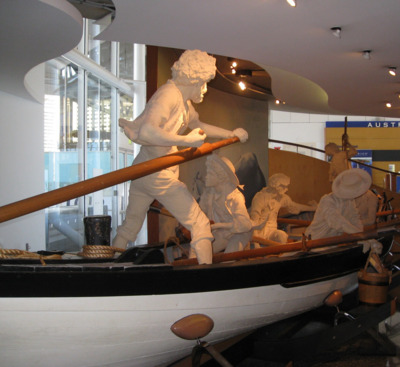
This was the exhibit that greeted us at the Maritime Museum. These are actually American whale hunters. This whaleboat replica was lent to the museum by Mystic Seaport of Connecticut, USA and it forms part of the USA Gallery dedicated by President George Bush senior on New Year's Day 1992 in the presence of Australian Prime Minister Paul Keating.
Here we are in front of the entrances to the Australian National Maritime Museum as we prepare to leave Darling Harbour and head back to our hotel. I remember falling asleep as soon as I laid in bed at the hotel on our second night in Sydney and that was just 8 pm. I was happy but exhausted.
